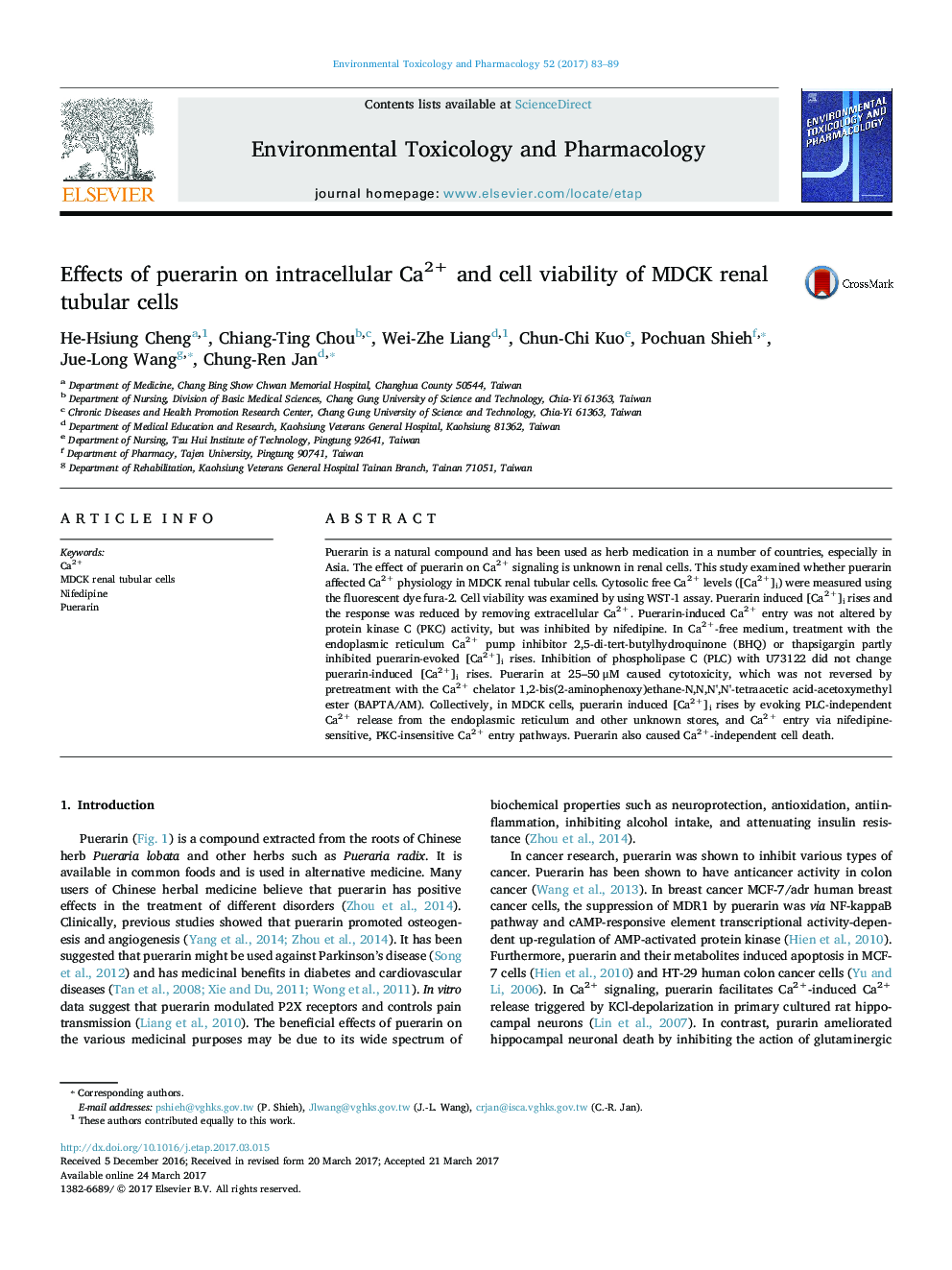| Article ID | Journal | Published Year | Pages | File Type |
|---|---|---|---|---|
| 5559669 | Environmental Toxicology and Pharmacology | 2017 | 7 Pages |
â¢We explored the effect of puerarin on MDCK renal tubular cells.â¢Puerarin induced Ca2+ movement including Ca2+ release and Ca2+ entry.â¢Puerarin caused cell death.
Puerarin is a natural compound and has been used as herb medication in a number of countries, especially in Asia. The effect of puerarin on Ca2+ signaling is unknown in renal cells. This study examined whether puerarin affected Ca2+ physiology in MDCK renal tubular cells. Cytosolic free Ca2+ levels ([Ca2+]i) were measured using the fluorescent dye fura-2. Cell viability was examined by using WST-1 assay. Puerarin induced [Ca2+]i rises and the response was reduced by removing extracellular Ca2+. Puerarin-induced Ca2+ entry was not altered by protein kinase C (PKC) activity, but was inhibited by nifedipine. In Ca2+-free medium, treatment with the endoplasmic reticulum Ca2+ pump inhibitor 2,5-di-tert-butylhydroquinone (BHQ) or thapsigargin partly inhibited puerarin-evoked [Ca2+]i rises. Inhibition of phospholipase C (PLC) with U73122 did not change puerarin-induced [Ca2+]i rises. Puerarin at 25-50 μM caused cytotoxicity, which was not reversed by pretreatment with the Ca2+ chelator 1,2-bis(2-aminophenoxy)ethane-N,N,N',N'-tetraacetic acid-acetoxymethyl ester (BAPTA/AM). Collectively, in MDCK cells, puerarin induced [Ca2+]i rises by evoking PLC-independent Ca2+ release from the endoplasmic reticulum and other unknown stores, and Ca2+ entry via nifedipine-sensitive, PKC-insensitive Ca2+ entry pathways. Puerarin also caused Ca2+-independent cell death.
